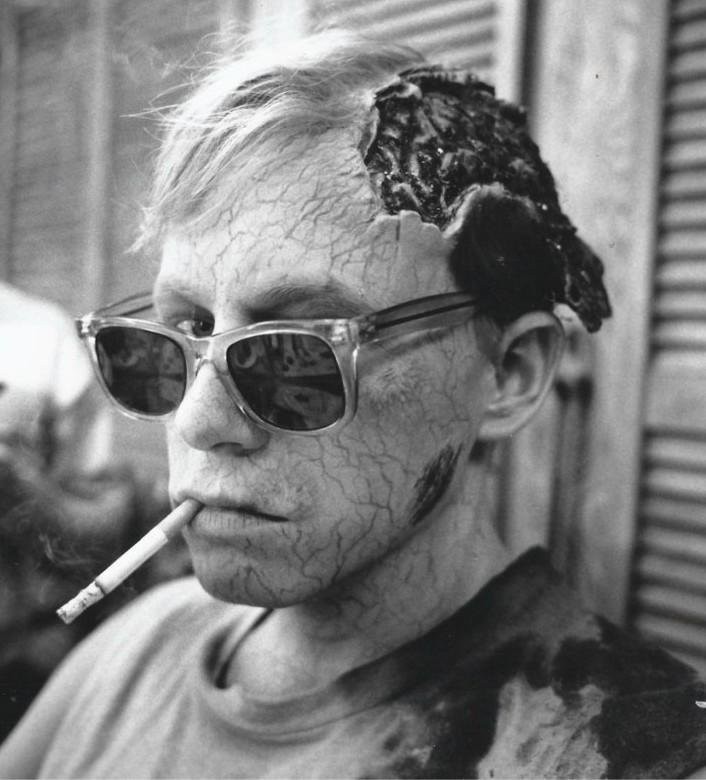Stephen King’s Pet Sematary has clawed its way into the nightmares of generations, and the 1989 film adaptation remains a chilling cornerstone of horror cinema. While the recent remake offered a fresh take on the terrifying tale, there’s a unique, unsettling charm to the original Pet Sematary that continues to resonate with fans. Let’s delve into the eerie world behind the camera and unearth some fascinating trivia that will deepen your appreciation for this classic horror masterpiece. Prepare to journey behind the headstones and discover secrets that even Church might not want you to know!
Intriguing Casting Choices and Character Interpretations
The casting of Pet Sematary (1989) was almost as fascinating as the film itself. Imagine a world where Bruce Campbell, the iconic Ash Williams from Evil Dead, stepped into the shoes of Louis Creed. He was seriously considered for the role, which could have brought a different flavor of horror to the film. Ultimately, Dale Midkiff embodied the increasingly desperate and grief-stricken doctor, but Campbell’s involvement would have been a fun “what if” for genre fans.
The ghostly presence of Victor Pascow, the accident victim who becomes Louis’s grim guide, was brought to life by Brad Greenquist. Greenquist revealed the power of his makeup was so convincing that during lunch breaks, even fellow cast and crew members gave him a wide berth, unable to shake off the unsettling aura of his spectral appearance. This dedication to the chilling atmosphere extended to the on-set experience, blurring the lines between fiction and the film’s macabre reality.
Director Mary Lambert envisioned Victor Pascow and Jud Crandall (played memorably by Fred Gwynne) as symbolic opposites, representing contrasting forces in Louis’s moral dilemma. Pascow, the terrifying specter, acts as a “good angel,” desperately trying to warn Louis of the cemetery’s dangers. In contrast, Jud, the seemingly benevolent neighbor, becomes the “bad angel,” leading Louis down a path of unthinkable consequences. This duality adds a layer of psychological depth to the horror, making the choices and their repercussions even more impactful.
And then there’s Church, the feline harbinger of doom. This seemingly innocent family pet was actually portrayed by not one, but seven different blue British Shorthair cats. Each feline actor was meticulously trained to execute specific actions, ensuring Church’s on-screen behavior was both believably cat-like and dramatically effective. This feline ensemble cast contributed significantly to the film’s unsettling atmosphere, proving that animal actors can be just as crucial to horror as their human counterparts.
For the role of Zelda, Rachel’s terminally ill sister, Lambert made a bold and unconventional choice. Instead of casting a young girl, she opted for a man, Andrew Hubatsek. Lambert felt a 13-year-old actress couldn’t quite capture the deeply disturbing and frightening presence Zelda needed to be. Hubatsek’s portrayal undeniably amplified Zelda’s horror, contributing to some of the film’s most genuinely terrifying moments and showcasing Lambert’s willingness to push boundaries for maximum impact.
Initially, executives suggested casting twins for both Ellie and Gage Creed, a common cost-saving practice in filmmaking when working with child actors. However, Mary Lambert was captivated by Miko Hughes’s audition for Gage. Despite being only three years old, Hughes delivered a performance that convinced Lambert to cast him as a single actor. This decision proved to be a masterstroke, as Hughes’s unsettlingly mature portrayal of Gage after his resurrection became one of the film’s most chilling and memorable aspects. His performance defied typical child actor tropes, adding to the film’s overall sense of unease.
Interestingly, for the role of Ellie, twins Beau and Blaze Berdahl were indeed cast. In a behind-the-scenes anecdote, during a scene requiring Ellie to cry, Mary Lambert initially tried to tap into the twins’ emotions, asking them to think of something sad. When that failed, she reportedly offered one of the twins extra money to cry, a pragmatic and perhaps slightly humorous approach to eliciting the desired performance from a child actor on a horror film set.
Stephen King’s Fingerprints and Personal Connections
Stephen King’s deep involvement in Pet Sematary (1989) is evident throughout the film, extending beyond just the source material. A devoted fan of The Ramones, King subtly wove references to their songs into the Pet Sematary novel. This admiration came full circle when The Ramones themselves contributed to the film, performing the iconic title track “Pet Sematary,” which blasts during the end credits, perfectly capturing the movie’s rebellious and morbid spirit.
King’s personal life also bled into the narrative in poignant ways. The heartbreaking premise of Pet Sematary was sparked by a real-life tragedy: the death of his daughter Naomi’s cat, Smuckey, after being hit by a truck near their home. This painful event became the emotional core of the story. Eagle-eyed viewers can even spot “Smuckey” etched onto one of the pet gravestones in both the film and the novel, a subtle and touching tribute to a beloved pet and the real-life inspiration behind the fictional cemetery.
The opening scene, where children’s voices recite epitaphs in the pet cemetery, features a chillingly familiar voice for horror aficionados. One of these voices belonged to the late Jonathan Brandis, known to many as the young Bill Denbrough from the It (1990) miniseries, another iconic Stephen King adaptation. This subtle casting choice adds a layer of intertextual resonance for King’s fans, connecting two beloved horror properties.
King’s contract explicitly stipulated that Pet Sematary had to be filmed in Maine, the state that serves as the backdrop for many of his stories and his own life. Director Mary Lambert understood this insistence, recognizing Maine’s landscape as possessing an “iconographic quality and archetypal resonance,” perfectly aligning with the story’s themes and atmosphere. Filming on location in Maine lent an undeniable authenticity and visual richness to the film, grounding the supernatural horror in a tangible and atmospheric reality.
Behind-the-Scenes Movie Magic and On-Set Secrets
Creating the unsettling Micmac burial ground was no small feat. Bulldozers were brought in to construct the stone mounds on an actual mountaintop, transforming the location into the eerie and ancient burial site central to the story. This commitment to practical set design enhanced the film’s tangible horror and contributed to the overall sense of realism, making the supernatural elements feel even more disturbing within a grounded environment.
The scene where Louis euthanizes Church is understandably sensitive, especially when involving animal actors. To ensure the cat’s safety and well-being, a veterinarian was present to sedate the animal, and a representative from the American Humane Society monitored the filming. The needle used was rigged to create the illusion of injection without actually harming the cat. This meticulous approach highlights the filmmakers’ commitment to animal welfare while still achieving the scene’s dramatic impact. The cat, thankfully, made a full recovery after filming.
The idyllic house featured in Pet Sematary, with its iconic tree, wasn’t found easily. Director Mary Lambert and Stephen King spent an entire summer searching for the perfect location. Ultimately, they discovered the ideal tree in a field and had it professionally dug up and replanted at the chosen house for filming. This dedicated effort ensured the visual aesthetic matched their vision, with the tree becoming a symbolic element, most notably seen as Ellie’s swing set in the film’s opening.
During the filming of Louis’s nightmare sequence featuring Victor Pascow, Dale Midkiff was initially filmed shirtless. However, the filmmakers felt Midkiff appeared “too sexy” for the scene’s unsettling tone. The scene was reshot with Midkiff fully clothed, a humorous example of how even seemingly minor details can be adjusted to maintain the desired atmosphere and character portrayal in a horror film.
For the brief but impactful shot of Jud Crandall’s body after his demise, a practical effect was employed. Instead of using Fred Gwynne himself, a sculpture of his head was created for the close-up. This technique, common in horror filmmaking, allowed for a more graphic and unsettling depiction of Jud’s death while minimizing discomfort for the actor and maintaining the scene’s shock value.
Even seemingly simple scenes presented challenges. Director Mary Lambert recounted that one of the most difficult tasks was getting one of the cats playing Church to eat a pork chop for the character’s second death scene. This seemingly mundane detail highlights the unpredictable nature of working with animal actors and the patience required to capture even the smallest actions on film, particularly in a genre that demands precision for both horror and believability.
Thematic Depth and Lasting Impact
Pet Sematary (1989) delves into profound and disturbing themes, most notably the taboo of death and humanity’s struggle to confront mortality. As noted by film analysts, horror often grapples with societal taboos, and Pet Sematary confronts death head-on, a topic often avoided in polite conversation. Rachel’s discomfort discussing death with her children and Louis’s desperate act of resurrecting Gage, rather than accepting his death, are prime examples of this thematic exploration.
The film’s chilling tagline, “Sometimes dead is better,” encapsulates the story’s central message. It serves as a stark warning against tampering with the natural order of life and death, highlighting the potentially devastating consequences of defying mortality. This simple yet profound statement resonates deeply, contributing to the film’s lasting impact and its ability to provoke thought and unease long after the credits roll.
Pet Sematary (1989) endures not just as a horror film, but as a potent exploration of grief, loss, and the terrifying consequences of refusing to let go. These behind-the-scenes glimpses reveal the dedication and creativity that went into crafting this enduringly disturbing cinematic experience, solidifying its place as a cornerstone of horror and a testament to Stephen King’s enduring power to terrify and provoke.

